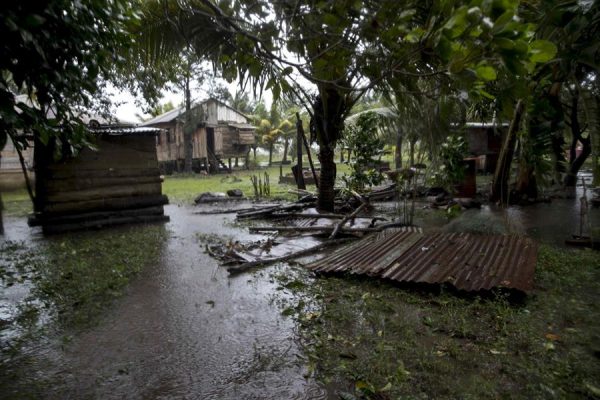Eta Increases Covid-19 Risk in Nicaragua & Honduras

It warns that people in shelters are more susceptible to the coronavirus. They should be alert, wear masks and wash their hands frecuently.
By Ivette Munguia (Confidencial)
HAVANA TIMES – The Pan American Health Organization (PAHO) warned that the passage of Hurricane Eta through Nicaragua and Honduras increased the risk of contagion of covid-19 in the affected areas. Furthermore, it urged the population in temporary shelters to be “alert”, use masks, practice social distancing and wash hands frequently.
Measures PAHO says in general should not be neglected as long as there is no cure for the coronavirus.
Dr. Ciro Ugarte, director of the PAHO Health Emergencies Department, indicated that initially the hurricane left 24,000 people in 1,400 shelters, 11 health centers damaged in Nicaragua, and two isolated hospitals in Honduras. He said it’s a situation that when combined with the pandemic “has a direct impact” on the affected population.
The possibility of greater transmission of Covid-19 in shelters or crowded areas, “is an extremely important issue,” emphasized Dr. Ugarte. The prevention measures implemented prior to the hurricane season “are those that are being activated at this time. These include the use of masks, physical distancing, hand hygiene and the routine control health monitoring will be very necessary.”
Likewise, Ugarte warned of the need to prioritize the reestablishment of health services in the area affected by the hurricane. He said a PAHO team made up of doctors, nurses and technicians are in Puerto Cabezas (Bilwi) reinforcing health services. “We hope that with the help of all institutions we can overcome this emergency,” he said.
The emergency of covid-19 as well as the response to hurricane Eta “are multisectoral responsibilities. The countries with experience in responding to covid-19 are in better conditions to face the situation,” said Ugarte. “Let’s not forget that the hurricane worsens conditions, putting the entire population at greater risk,” he noted.
According to data from the Ministry of Health (Minsa) the covid-19 pandemic has left, until this Thursday, November 5, 157 people dead and 5,591 people infected with the virus. However, the Citizens Observatory, which monitors the pandemic independently, counted 2,780 deaths with symptoms of covid-19 and 10,778 suspected cases of the disease until October 21.
Eta’s passage through Nicaragua
Eta hit Nicaraguan territory on November 3 as a category four hurricane. Initially, it left material damage to homes, two people dead, streets and power lines destroyed. Floods and landslides also occurred in the Autonomous Region of the North Caribbean Coast (RACCN).
The authorities of the National System for Prevention, Mitigation and Attention of Disasters (Sinapred) register at least 30 thousand refugees.
The passage of Hurricane Eta brought to the memory of Nicaraguans the devastating Hurricane Mitch. That storm in 1998 left a total of 2,863 people dead in Nicaragua.
Meteorologist Agustín Moreira affirmed, in an interview with Esta Noche and CONFIDENCIAL, that Hurricane Eta (now a tropical depression) is equal to Mitch due to the amount of rainfall it is generating. Although thus far the deaths are fortunately much less.
“It has the same characteristics as what happened with Hurricane Mitch, because it’s bringing us heavy rainfall. The only difference is that Eta has affected a totally different topography,” Moreira stated.
